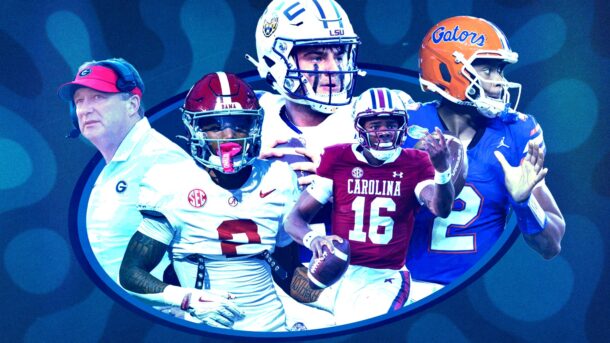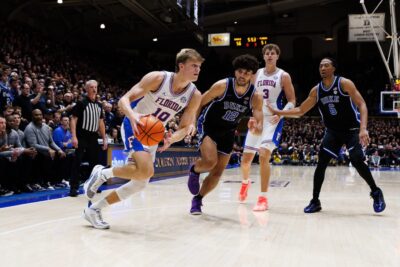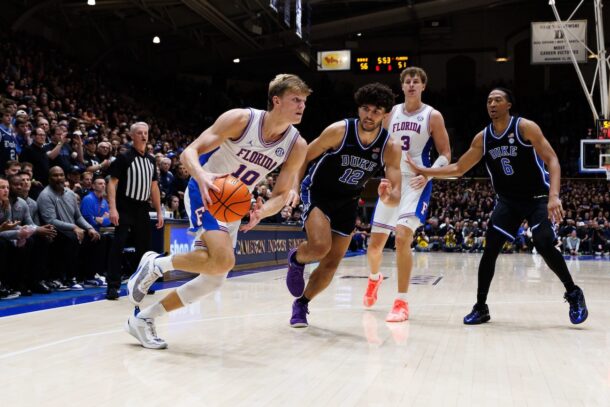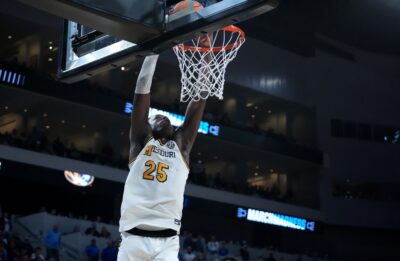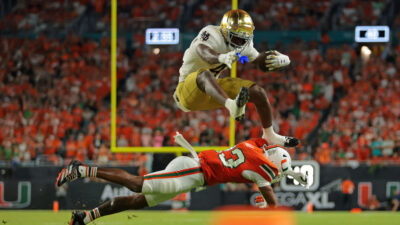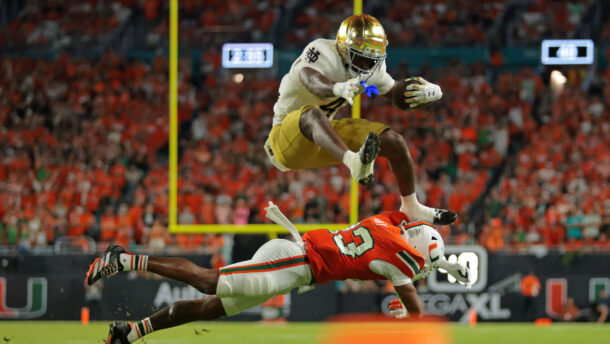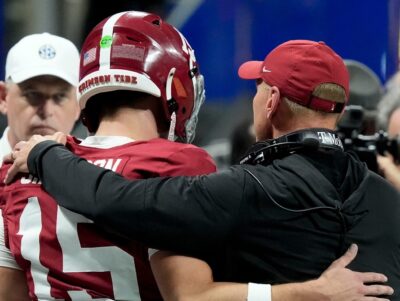What did Ohio State, Oregon and TCU have in common last season?
The answer — the one we’re looking for, anyway — has nothing to do with offense.
Each of those teams, ranked No. 1, 2 and 3 in the final AP poll of the 2014 season, also finished Top 5 in the country in defensive takeaways. Final AP No. 5 Michigan State tied for fifth in takeaways as well.
Florida State and Missouri were the model programs in 2013, converting an outstanding number of interceptions and fumbles into a Top 5 national ranking. In fact, the Tigers, surprise SEC East winners for consecutive years, at one point secured a defensive takeaway in 47 consecutive games, a streak that ended in a bad home loss to Indiana.
As offenses become increasingly more difficult to stop, possession is becoming much more valuable than yards and field position. Teams that focus on disruptive, aggressive defensive strategies may be at a much greater advantage now than they would’ve been 20 years ago. The resulting tradeoff — giving up some big plays to make some of your own — may be the more valuable strategy in 2015.
Take the Ducks, for example. Granted, Heisman Trophy winner Marcus Mariota played quarterback, perfecting the Oregon system to the tune of 45.4 points per game. That was enough to overcome a defense that allowed a whopping 429.7 yards per game and ranked 89th in the country.
But wait. Consider that the team also finished third in the nation in defensive takeaways with 34, two years after leading the country with 40. Especially since the offense is so productive, the defense can focus on trying to wrest the ball away and give quarterbacks like Mariota extra possessions. (It helps that many Pac-12 teams, often faced with late-game deficits against Oregon, are more than willing to aggressively throw into coverage.)
One of the biggest reasons that Alabama’s defense has fallen off from historic to merely good is that the team’s interceptions have plummeted, from 46 in 2009-10 to 22 in 2013-14. With the proliferation of hurry-up offenses in the SEC, like at Auburn, even the most consistently talented defense in the country no longer can hold every opponent under 20 points. The best offenses are going to move the ball against the best defenses, as TCU helped prove against Ole Miss in the Chick-fil-A Peach Bowl.
That’s why takeaways have become so critical. We saw it as the Ducks undressed Jameis Winston in the College Football Playoff semifinals. If you can put up points, even if the other teams consistently moves the ball, if you also take it away two or three times a game, you’re going to win often.
Texas A&M is a good example of how this should work in the SEC. Kevin Sumlin’s starting quarterback throws for about 4,000 yards every single year. With the exception of last year’s trip to Tuscaloosa, A&M usually can score touchdowns blindfolded and with one hand tied behind their backs.
But the team forced just 13 takeaways last season in 13 games.
Even with new coordinator John Chavis, it’s hard to imagine the Aggies boasting the conference’s best defense after the misery of the last three years. But Chavis doesn’t need to rival the Crimson Tide or his former LSU Tigers in yards allowed per game to turn A&M into a national contender. If he can find another player or two to apply pressure alongside Myles Garrett, and manufacture a few defensive backs capable of producing interceptions in bunches, it hardly will matter if the team allows 400 yards per game.
Think of it this way: If you’re playing church-league basketball, why dive into the passing lanes or sprint toward a player loading up well past the three-point line? You’re risking an open layup or a pump fake and blow-by when if your team just packs the paint and bodies up after missed shots, the other team is going to shoot themselves out of the game.
But if you’re playing the Golden State Warriors, you might as well pick your spots to heave yourself into a passing lane. Even if you play terrific 1-on-1 defense on Stephen Curry, he’s going to drop a crossover and step-back 3-point shot from well beyond the NBA line, and probably swish it with your hand smothering his eyes.
In the same way, especially against super-efficient offenses, it’s not enough to throw huge, strong bodies up front and smother the run. Strong cover corners are good, but to beat the best you need defensive backs capable of making plays on the ball and linebackers with an eye toward stripping it.
It’s an exaggeration to say that the game is becoming flag football, but it’s creeping toward that end of the spectrum every year. To stop teams like Baylor, TCU, Oregon, Auburn and Texas A&M often means finding a way to stall a few drives with some huge plays, either with takeaways or big tackles for loss.
Whether the SEC reclaims the national championship during the 2015 season or it stays elsewhere for a third consecutive year, the winner is just as likely to be defined by its national-best takeaways than by its video-game passing numbers.
An itinerant journalist, Christopher has moved between states 11 times in seven years. Formally an injury-prone Division I 800-meter specialist, he now wanders the Rockies in search of high peaks.
